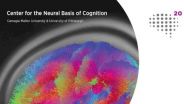(Press-News.org) Children who repeatedly become infected with malaria often experience no clinical symptoms with these subsequent infections, and a team led by UC San Francisco researchers has discovered that this might be due at least in part to a depletion of specific types of immune cells.
Working in Uganda, one of the most malaria-plagued nations in Africa and one in which individuals are repeatedly exposed to the malaria parasite, UCSF scientists found that a depletion of immune cells known as gamma delta T cells diminishes inflammatory responses in infected children — responses that when unabated can become debilitating or deadly.
"These inflammatory immune cells are depleted in children with repeated malaria exposure, and those that remain behave differently than the same cell types in children who have not previously been infected," said Prasanna Jagannathan, MD, an assistant professor of medicine at UCSF, who conducted the lab analysis as part of a study team led by Margaret Feeney, MD, a UCSF professor of experimental medicine and pediatrics. The study was published online on August 27, 2014, in the journal Science Translational Medicine.
Children with the fewest number of these cells were more likely to be infected and to harbor malaria parasites, but the scientists determined that they also were less likely to suffer from clinical symptoms, such as fevers. In addition, specific genes associated with anti-parasite immune responses were less activated in children with fewer numbers of these cells.
The depletion of gamma delta T cells appears to be beneficial in some ways and detrimental in others, Feeney said. Individuals may no longer suffer symptoms, but they also might not clear the parasite and may remain infectious, allowing the disease to be further spread by mosquitos.
The inflammatory responses associated with initial infection with the malaria parasite, Plasmodium falciparum, may help clear the parasite from the bloodstream, but can also lead to major symptoms including severe anemia, cerebral malaria, and even death.
For the study researchers collected data on malaria infections, disease symptoms and immune responses in 78 four-year-olds who have been monitored since infancy as part of a malaria research collaboration between UCSF and scientists from Makarere University in Kampala, Africa, including Moses Kamya, MD, a co-author of the new study and chair of the Department of Medicine at Makarere. The study was conducted in Tororo, Uganda, where malaria now is more prevalent than in the Ugandan capital. The children were followed for all of their medical care at a study clinic and screened each month for the malaria parasite.
At one year of age, all children in the study had shown clinical symptoms of malaria with each infection. At four years, fewer than 10 percent were symptom-free upon infection, but one year later more than 20 percent were symptom-free when infected.
While no immediately applicable disease-fighting strategy has emerged from the new discovery, it points to further avenues of study, Feeney said.
"We want to understand whether this is a generalizable phenomenon that also occurs among those who are first exposed to malaria as adults and in regions where malaria incidence is lower." In Uganda, adults generally do not get sick from the disease.
Feeney speculates that malaria infection, by reshaping immune responses, might influence susceptibility to, and protection from, other infectious diseases.
INFORMATION:
Major funders of the study were the U.S. National Institutes of Health and Centers for Disease Control and Prevention.
The UCSF-Makarere University (MU) collaboration was launched in 1998 to focus on malaria research. Researchers evaluate new antimalarial therapies, develop and test new public health approaches to malaria, and study antimalarial drug resistance.
UCSF is the nation's leading university exclusively focused on health. Now celebrating the 150th anniversary of its founding as a medical college, UCSF is dedicated to transforming health worldwide through advanced biomedical research, graduate-level education in the life sciences and health professions, and excellence in patient care. It includes top-ranked graduate schools of dentistry, medicine, nursing and pharmacy; a graduate division with world-renowned programs in the biological sciences, a preeminent biomedical research enterprise and two top-tier hospitals, UCSF Medical Center and UCSF Benioff Children's Hospital San Francisco. Please visit http://www.ucsf.edu.
Malaria symptoms fade on repeat infections due to loss of immune cells, UCSF-led team says
2014-08-27
ELSE PRESS RELEASES FROM THIS DATE:
Tracking spending among the commercially insured
2014-08-27
LEBANON, NH – Recent growth in health care spending for commercially insured individuals is due primarily to increases in prices for medical services, rather than increased use, according to a new study led by researchers at The Dartmouth Institute for Health Policy & Clinical Practice, published in the August issue of the American Journal of Managed Care.
There is increasing concern that consolidation in the health care marketplace will lead to increased prices faced by payers and, ultimately, consumers," said Carrie Colla, PhD, assistant professor at The Dartmouth ...
Encyclopedia of how genomes function gets much bigger
2014-08-27
A big step in understanding the mysteries of the human genome was unveiled today in the form of three analyses that provide the most detailed comparison yet of how the genomes of the fruit fly, roundworm, and human function.
The research, appearing August 28 in in the journal Nature, compares how the information encoded in the three species' genomes is "read out," and how their DNA and proteins are organized into chromosomes.
The results add billions of entries to a publicly available archive of functional genomic data. Scientists can use this resource to discover ...
Rubber meets the road with new ORNL carbon, battery technologies
2014-08-27
OAK RIDGE, Tenn., Aug. 27, 2014 – Recycled tires could see new life in lithium-ion batteries that provide power to plug-in electric vehicles and store energy produced by wind and solar, say researchers at the Department of Energy's Oak Ridge National Laboratory.
By modifying the microstructural characteristics of carbon black, a substance recovered from discarded tires, a team led by Parans Paranthaman and Amit Naskar is developing a better anode for lithium-ion batteries. An anode is a negatively charged electrode used as a host for storing lithium during charging.
The ...
Gang life brings deep health risks for girls
2014-08-27
Being involved in a gang poses considerable health-related risks for adolescent African American girls, including more casual sex partners and substance abuse combined with less testing for HIV and less knowledge about preventing sexually transmitted diseases, according to a new study.
The findings come from a questionnaire survey with 188 African American females, ages 13 to 17, who were incarcerated in a short-term detention facility in Atlanta. The data showed that low self-esteem, emotional problems, trauma history, low parental monitoring, friends who engage in risky ...
Kessler Foundation researchers publish first study of brain activation in MS using fNIRS
2014-08-27
West Orange, NJ. August 27, 2014. Using functional near infrared spectroscopy (fNIRS), Kessler Foundation researchers have shown differential brain activation patterns between people with multiple sclerosis (MS) and healthy controls. This is the first MS study in which brain activation was studied using fNIRS while participants performed a cognitive task. The article, "Neuroimaging and cognition using functional near infrared spectroscopy (fNIRS) in multiple sclerosis," was published online on June 11 by Brain Imaging and Behavior. Authors are Jelena Stojanovic-Radic, PhD, ...
Water 'thermostat' could help engineer drought-resistant crops
2014-08-27
DURHAM, N.C. -- Duke University researchers have identified a gene that could help scientists engineer drought-resistant crops. The gene, called OSCA1, encodes a protein in the cell membrane of plants that senses changes in water availability and adjusts the plant's water conservation machinery accordingly.
"It's similar to a thermostat," said Zhen-Ming Pei, an associate professor of biology at Duke.
The findings, which appear Aug. 28 in the journal Nature, could make it easier to feed the world's growing population in the face of climate change.
Drought is the ...
Detecting neutrinos, physicists look into the heart of the sun
2014-08-27
AMHERST, Mass. – Using one of the most sensitive neutrino detectors on the planet, an international team of physicists including Andrea Pocar, Laura Cadonati and doctoral student Keith Otis at the University of Massachusetts Amherst report in the current issue of Nature that for the first time they have directly detected neutrinos created by the "keystone" proton-proton (pp) fusion process going on at the sun's core.
The pp reaction is the first step of a reaction sequence responsible for about 99 percent of the Sun's power, Pocar explains. Solar neutrinos are produced ...
Flexing the brain: Why learning tasks can be difficult
2014-08-27
VIDEO:
Learning a new skill is easier when it is related to an ability we already have. For example, a trained pianist can learn a new melody easier than learning how...
Click here for more information.
PITTSBURGH—Learning a new skill is easier when it is related to an ability we already have. For example, a trained pianist can learn a new melody easier than learning how to hit a tennis serve.
Scientists from the Center for the Neural Basis of Cognition (CNBC) – a joint program ...
Stanford researchers work to understand gene expression across organisms
2014-08-27
Fruit flies and roundworms have long been used as model organisms to learn more about human biology and disease. Now, researchers at the Stanford University School of Medicine have found that although many aspects of regulatory networks are conserved among the three distantly related organisms, other differences have emerged over evolutionary time.
These differences may explain why, for example, worms slither, flies fly and humans walk on two legs, even though they all use the same basic genetic building blocks.
"We're trying to understand the basic principles that ...
Evolution used similar molecular toolkits to shape flies, worms, and humans
2014-08-27
Although separated by hundreds of millions of years of evolution, flies, worms, and humans share ancient patterns of gene expression, according to a massive Yale-led analysis of genomic data.
Two related studies led by scientists at Harvard and Stanford, also published Aug. 28 in the same issue of the journal Nature, tell a similar story: Even though humans, worms, and flies bear little obvious similarity to each other, evolution used remarkably similar molecular toolkits to shape them.
However, the same Yale lab reports in a separate paper published in the Proceedings ...



